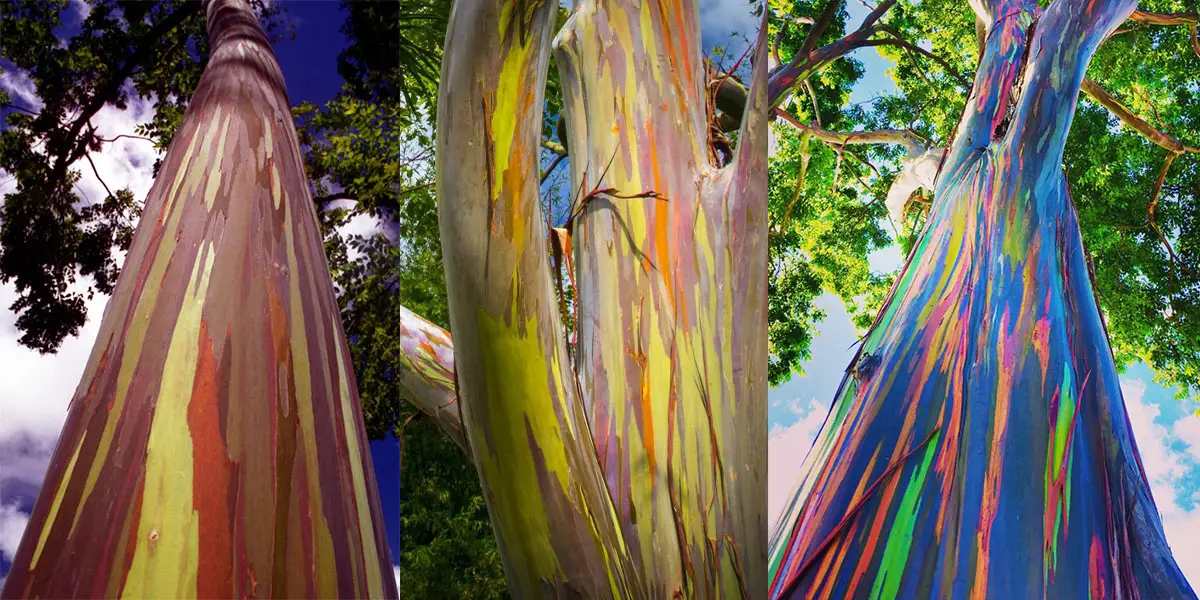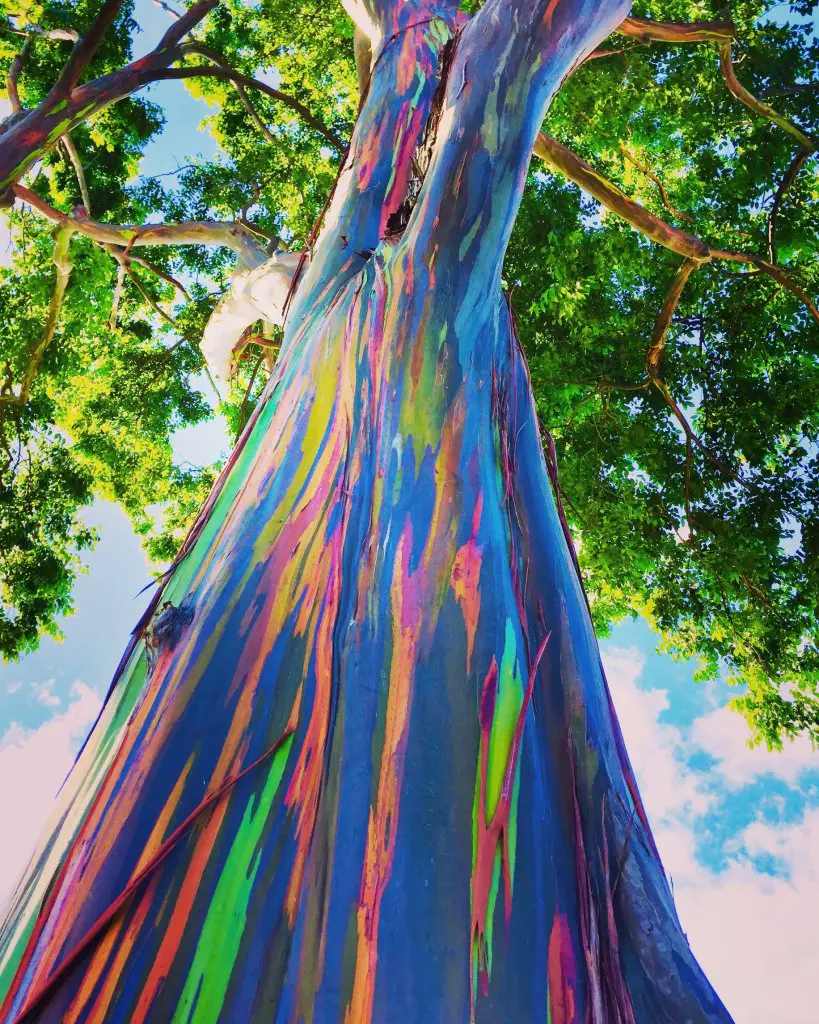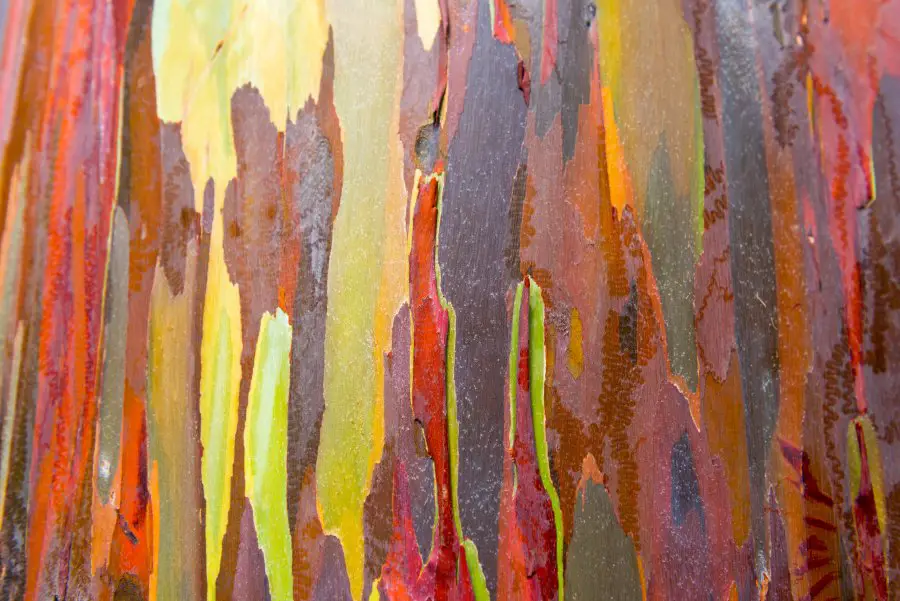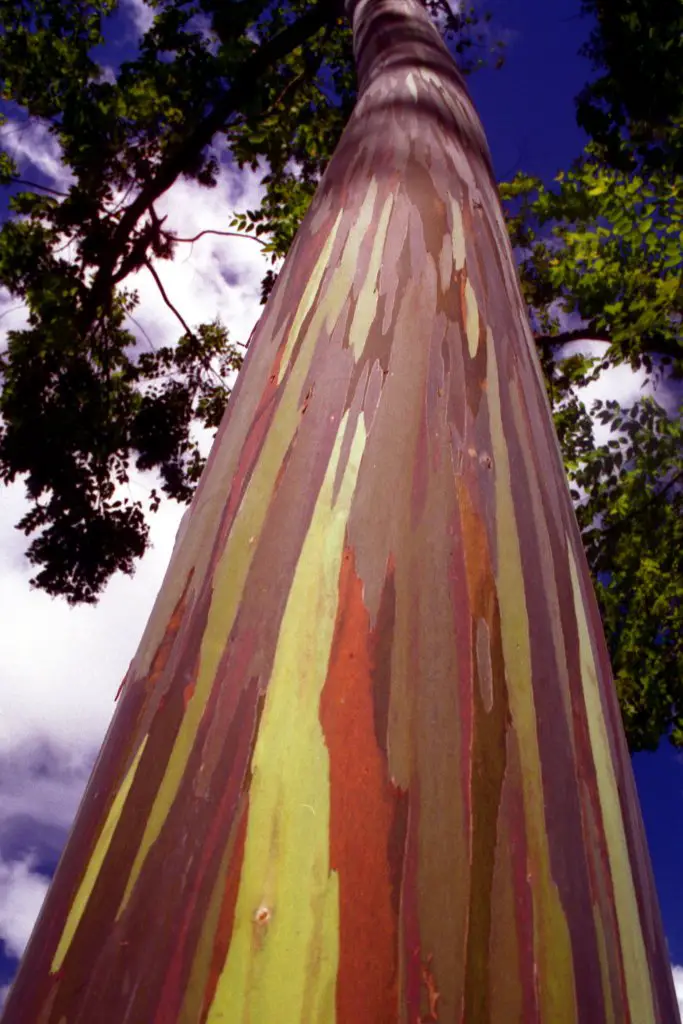Rainbow Eucalyptus: One Of The Most Beautiful Trees In The World

Eucalyptus deglupta, popularly known as the Rainbow Eucalyptus, sheds its bark in a unique manner. The ‘deglupta’ in its scientific name translates to ‘to peel off, husk or shell where it grows naturally’. When the outer covering of the trunk is shed, a green surface is revealed. This is not an uncommon phenomenon. With time, however, the bright green color turns blue, then purple, followed by orange, and finally maroon.


The entire surface of the bark is not shed by the plant at one go which leads to the beautiful kaleidoscopic effect throughout the year!
Read: The Warriors Of The Rainbow Prophecy
Native to Indonesia, Philippines, and Papua New Guinea, this mysterious plant is also known as the “rainbow gum”, or “Mindanao gum”. This variety is the only one that thrives in the rainforest with a range that extends into the northern hemisphere.
The rainbow eucalyptus is one of the four eucalyptus species that grow in Australia. The other 700 species of eucalyptus are not suited to the Australian climate.
The mature tree reaches a height of 100 to 150 feet in its native habitat and the trunk is 6 to 8 feet in diameter.

Even though the rainbow eucalyptus tree produces white flowers and evergreen leaves like the other species of eucalyptus, its glands do not secrete much aromatic oil.
Read: Study Estimates That 40% Of Tropical Plants In Africa On Verge Of Extinction
These trees grow in a short span of time and absorb a lot of water. The chances of malaria are reduced if these trees are used for draining swamps.


Another property is its ability to release a specific compound that aids the growth of the neighboring plant species. Not only does the rainbow eucalyptus look like Nature’s painting, but they also have such benefits.
The rainbow eucalyptus has widespread roots that may cause damage to concrete roads and buildings, which make it a difficult plant to cultivate. But surely, they are a treat to the eyes, right?
Image 1 Credit: Sean Thomas
Image 2 Credit: Gerold Grotelueschen
Image 3 Credit: Thomas
Image 4 Credit: Jeff Kubina
Image 5 Credit: Bob B. Brown
Image 6 Credit: Paxson Woelber
Leave Comment: